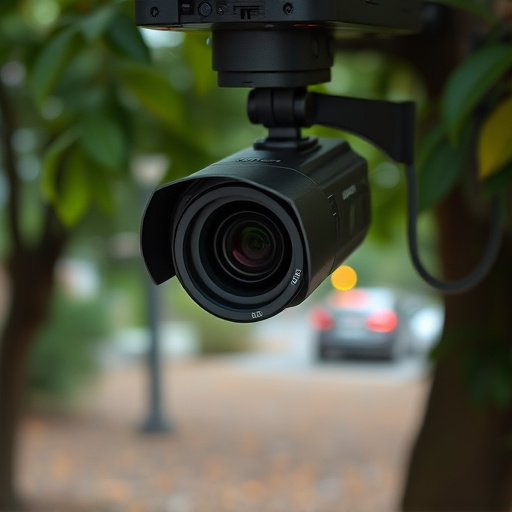Wireless spy camera phone apps have transformed surveillance, offering advanced technology for discreet video monitoring via Wi-Fi or Bluetooth with encryption for secure data transfer. Their user-friendly interfaces facilitate remote control for personal and professional use. Camouflage techniques blend these devices with their surroundings, enhancing privacy but raising ethical concerns about consent, data protection, and potential misuse that require strict regulations to maintain public trust in a connected world.
“Uncover the art of surveillance with our comprehensive guide on advanced camouflage techniques for wireless spy camera phone apps. In today’s digital landscape, understanding the intricacies of this technology is paramount. We explore how these tiny yet powerful tools can blend into their surroundings, offering unprecedented insights while navigating ethical boundaries.
From basic principles to sophisticated deployment strategies, this article equips readers with knowledge to minimize detection risks and respect privacy. Discover the fine line between innovation and discretion in the world of wireless spy camera phone apps.”
- Understanding Wireless Spy Camera Phone App Technology: Unveiling the Basics
- Advanced Camouflage Techniques: Blending into the Environment
- Strategies for Effective Deployment and Minimizing Detection Risks
- Ethical Considerations and Legal Implications: Navigating Privacy Boundaries
Understanding Wireless Spy Camera Phone App Technology: Unveiling the Basics
The rise of Wireless Spy Camera Phone Apps has transformed how we perceive privacy and security. These innovative applications leverage modern technology to secretly capture and transmit video footage from a phone’s camera, offering a discreet and accessible surveillance solution. At their core, these apps function by establishing a wireless connection, typically through Wi-Fi or Bluetooth, enabling the transfer of real-time visuals to a connected device. This technology has become increasingly sophisticated, incorporating advanced encryption protocols for secure data transmission and user-friendly interfaces for effortless control.
Understanding the basics of Wireless Spy Camera Phone App functionality is crucial for anyone interested in enhancing their surveillance capabilities. By mastering these apps, users can remotely monitor various environments, from home security to professional surveillance, without drawing unnecessary attention. This evolving technology continues to shape the landscape of personal and commercial safety, presenting both opportunities and challenges in the realm of privacy management.
Advanced Camouflage Techniques: Blending into the Environment
In the realm of surveillance equipment, advanced camouflage techniques have emerged as a game-changer, allowing devices like wireless spy camera phone apps to operate discreetly. By blending into their surroundings, these tools can capture uninhibited footage without drawing attention, making them invaluable for various applications, from home security to professional investigations. Camouflage designs range from sophisticated digital patterns that mimic natural environments to physical covers crafted to match specific locations, ensuring the equipment remains invisible.
The effectiveness of camouflage lies in its ability to make surveillance devices appear as ordinary objects or components of the environment. For instance, a wireless spy camera disguised as a common household item like a smoke detector or light bulb can operate for extended periods without detection. This subtlety is particularly crucial in today’s digital era, where vigilance demands a balance between privacy and security, ensuring that surveillance equipment serves its purpose without becoming a pestering reminder of constant observation.
Strategies for Effective Deployment and Minimizing Detection Risks
When deploying surveillance equipment, particularly wireless spy camera phone apps, it’s crucial to employ strategies that minimize detection risks. One effective technique is camouflage—integrating the devices seamlessly into their surroundings. This could involve positioning them behind objects like plants, posters, or even wall-mounted shelves, ensuring they blend in without drawing suspicion. Additionally, using night vision or infrared capabilities can help in low-light conditions, making it harder for individuals to notice the equipment.
Another key strategy is to leverage advanced deployment techniques. This includes utilizing hidden mounting solutions, such as those designed to look like everyday objects (e.g., fire alarms, smoke detectors). Additionally, employing motion-activated triggers or setting up automated recording schedules can make the surveillance more efficient while reducing the chances of human intervention or discovery. Regular updates to the wireless spy camera phone app’s firmware and software are also essential to stay ahead of potential detection methods and ensure optimal performance.
Ethical Considerations and Legal Implications: Navigating Privacy Boundaries
Surveillance equipment, especially with advancements in technology like wireless spy camera phone apps, raises important ethical considerations and legal implications. As privacy becomes a growing concern in today’s digital era, navigating the boundaries between security and individual rights is crucial. The use of these devices must adhere to strict guidelines to respect personal privacy while ensuring public safety.
Wireless spy cameras accessible through smartphone apps blur the lines of traditional surveillance, making it easier for individuals to secretly monitor others. This raises questions about consent, data protection, and the potential for misuse. It’s essential to consider the legal frameworks surrounding these technologies, including regulations on data collection, storage, and distribution, to ensure responsible use while respecting privacy rights and fostering public trust.
The integration of wireless spy camera phone apps into surveillance equipment has revolutionized privacy monitoring. Advanced camouflage techniques, combined with strategic deployment, allow for discreet observation while minimizing detection risks. However, it’s crucial to balance these capabilities with ethical considerations and legal implications, especially concerning privacy boundaries. As technology advances, users must remain vigilant in navigating this complex landscape, ensuring responsible and lawful use of such tools.
